The best Christmas plants to enhance the holiday spirit include the vibrant Holly (Ilex opaca), the traditional Poinsettia (Euphorbia pulcherrima), the versatile Ivy (Hedera helix), the blooming Christmas Cactus (Schlumbergera x Buckleyi), and the aromatic Douglas Fir (Pseudotsuga menziesii).
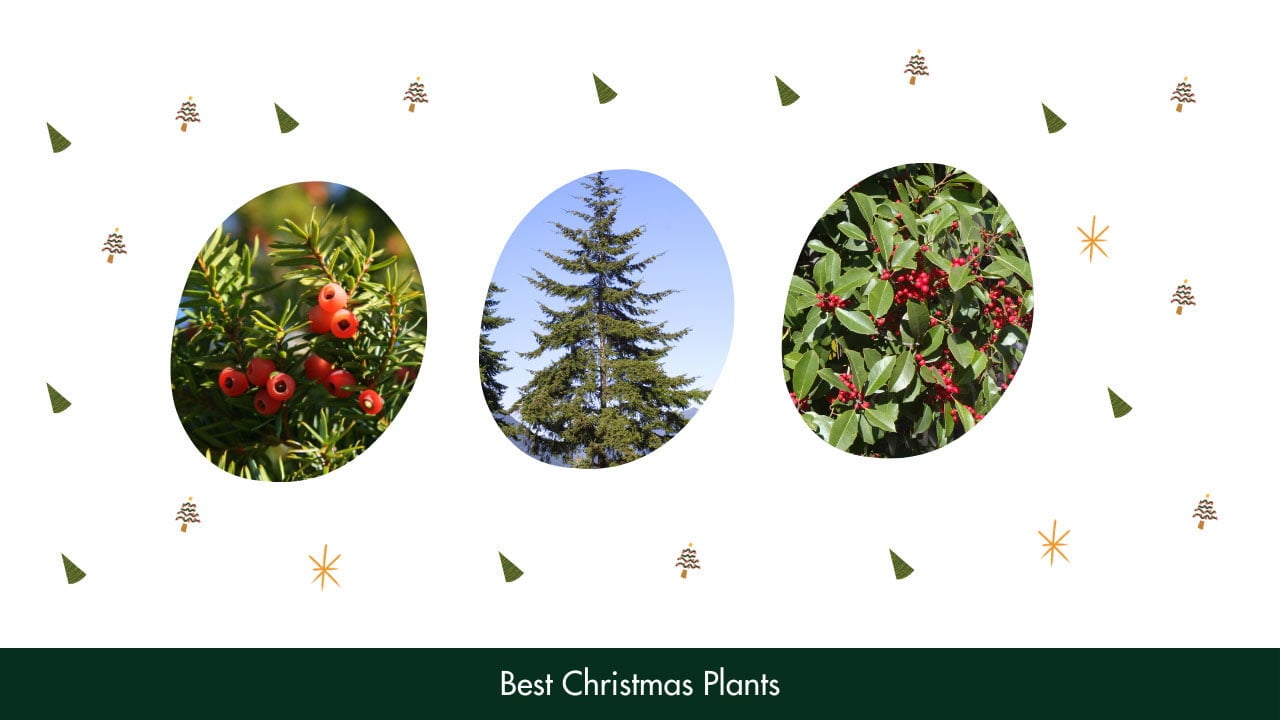
Whether you're looking for a splash of color or a touch of greenery, there's a Christmas plant for every home.
Get ready for the blooming season with the Christmas rose and the Thanksgiving cactus. Or, bring a touch of the tropics to your holidays with the festive red berries and flower buds of tropical plants.
Get inspired with our list of favorite Christmas plants and transform your home into a winter wonderland!
Best Christmas Plants
1. Holly (Ilex opaca)
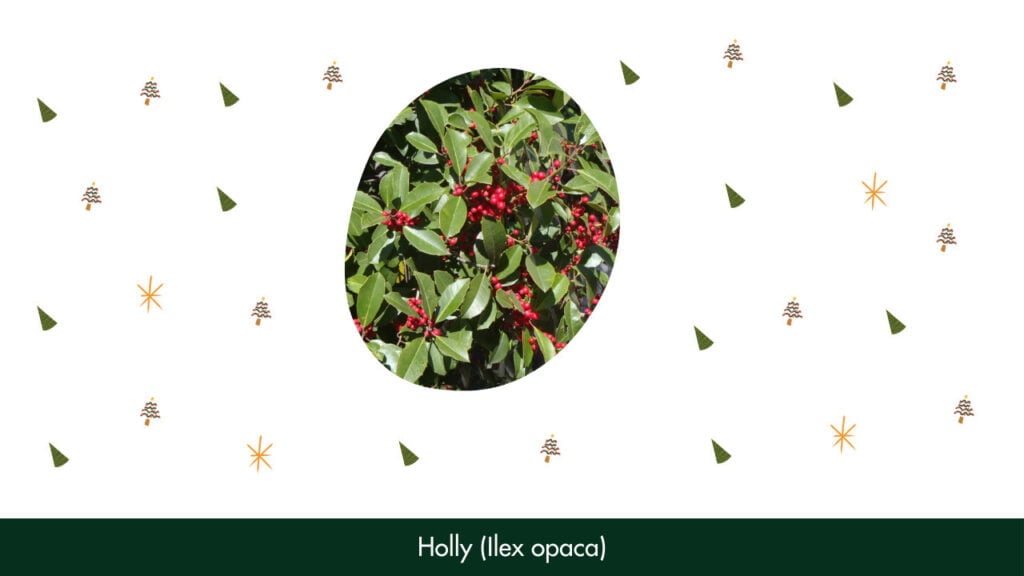
Holly is a species of evergreen shrub that thrives in USDA Hardiness Zones 5-9. It bears dark green, glossy leaves that grow in a spiky pattern, with small white flowers that bloom in the spring and red berries in the winter.
This ornamental plant prefers well-drained soil with a slightly acidic pH and requires full to partial sun exposure to grow optimally. It's also important to keep the soil moist but not waterlogged to prevent root rot.
Further, pet owners should note that holly leaves can harm pets with their spines, while the berries cause vomiting or diarrhea in cats and dogs.
It's believed that Christians used holly in Europe to decorate their homes during the winter solstice to ward off evil spirits. Today, it's commonly used to make wreaths, topiaries, and other Christmas decorations.
Holly could be highlighted under “natural & eco-friendly trees” because of its evergreen nature and use in traditional decorations, which aligns with sustainable and natural décor practices.
2. Poinsettia (Euphorbia pulcherrima)
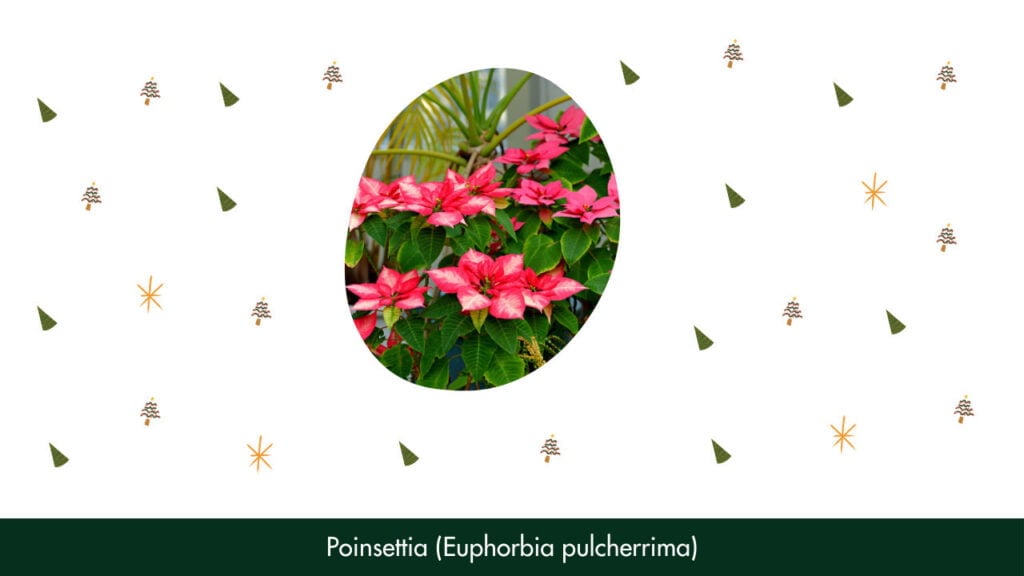
Poinsettia is a tropical plant known for its bright red bracts, which bloom during winter. These crimson-red plants are slightly toxic to dogs and cats.
That said, poinsettias prefer temperatures between 60-70 degrees Fahrenheit. So, make sure to place it in a bright window with indirect sunlight. It also needs consistently moist soil, so water sparingly and avoid letting the soil become soggy.
Apart from being used as a favorite Christmas plant, Poinsettias can also be grown as a houseplant or planted outdoors in USDA Hardiness Zones 9-11.
According to legend, a young girl in Mexico was too poor to provide a gift for baby Jesus. Instead, she gathered weeds from the side of the road and placed them in front of the nativity scene. Miraculously, the weeds transformed into bright red poinsettias, and the plant has been associated with the holiday season ever since.
3. Ivy (Hedera helix)
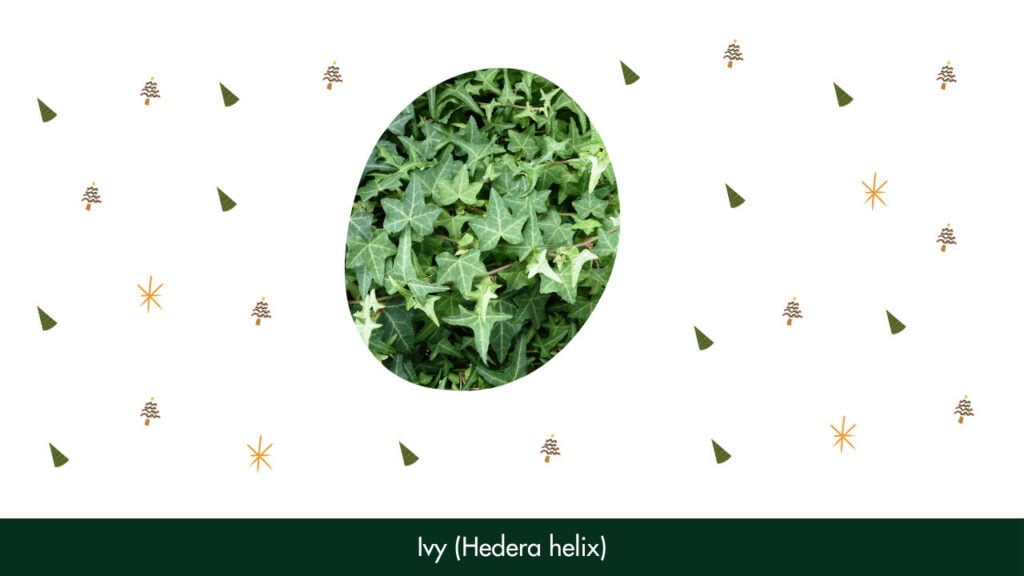
The evergreen shrub English Ivy is the perfect addition to your winter garden or as an indoor Christmas tree. Its dark green needles and glossy leaves contrast stunningly with bright flowers and berries. It can grow in direct sunlight or partial shade, making it versatile for any room in your home.
To ensure your ivy thrives, keep the soil evenly moist and well-drained. It is best suited for USDA Hardiness Zones 5 through 9.
Ivy is often associated with the god Dionysus and is believed to have been used to ward off evil spirits in medieval times. Regardless of its mythological background, ivy is a merry addition to any home during the holiday season, whether you use it as a potted plant or a topiary.
Ivy fits well under “rustic Christmas trees” because of its traditional use in holiday decorations and its ability to add a touch of old-world charm to any setting.
4. Christmas Cactus (Schlumbergera x Buckleyi)
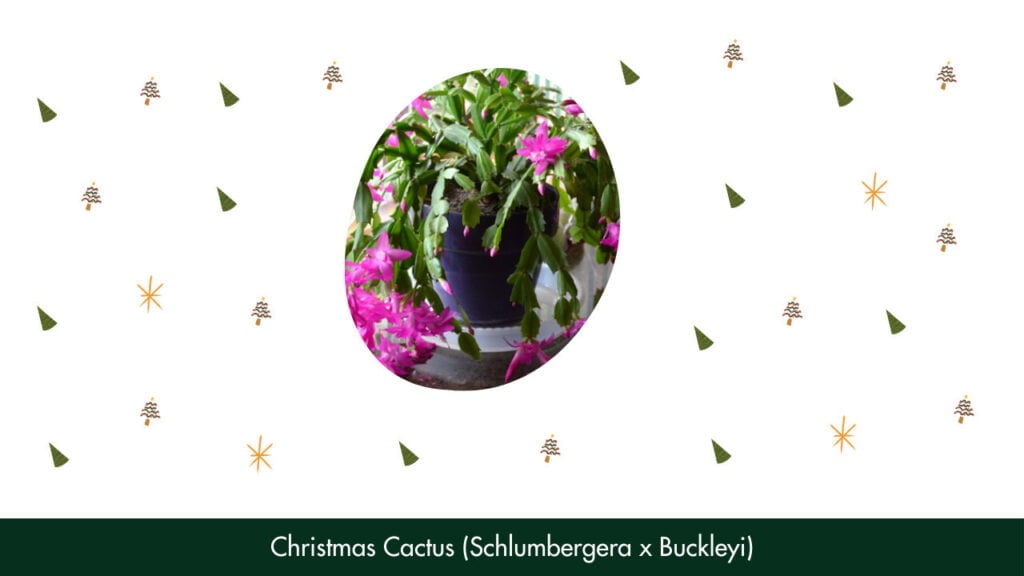
The Christmas cactus is a tropical plant popular for its gorgeous blooms and easy care. Its nectar-rich flowers, which come in shades of pink, white, and red, bloom in late fall and early spring. It can tolerate partial shade and direct sun, but too much of either can harm the plant. Overall, it needs bright, indirect light, well-draining, and consistently moist but not too soggy soil to prevent root rot.
Christmas cactus is an evergreen shrub that can bloom year after year with proper care. Legend has it that the Christmas cactus was named after baby Jesus, who was born in a manger where a cactus grew. The cactus bloomed with fragrant flowers on Christmas Eve, a sign of the miracle of Jesus' birth.
5. Douglas Fir (Pseudotsuga menziesii)
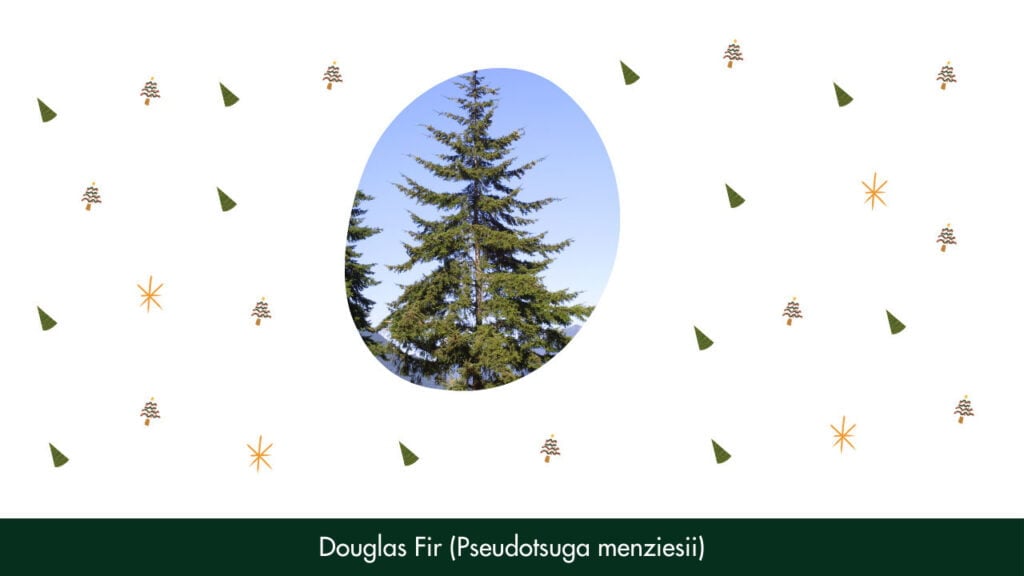
The evergreen shrub Douglas fir is one of the best Christmas plants, featuring tall green stems, dark green needles, and a pyramidal shape, making it the ideal indoor Christmas tree. Our findings show that this species thrives in USDA Hardiness Zones 4 to 6, where it can grow up to 80 feet tall outdoors. For best results, give your Douglas fir bright light and slightly moist soil, and plant it in well-drained potting soil.
In folklore, the evergreen foliage of the Douglas fir was used as a symbol of everlasting life and is also believed to have been the host tree for the baby Jesus. So, if you're looking for a popular Christmas tree variety that will make your home feel more festive, Douglas fir is a great choice!
6. Yew (Taxus spp.)
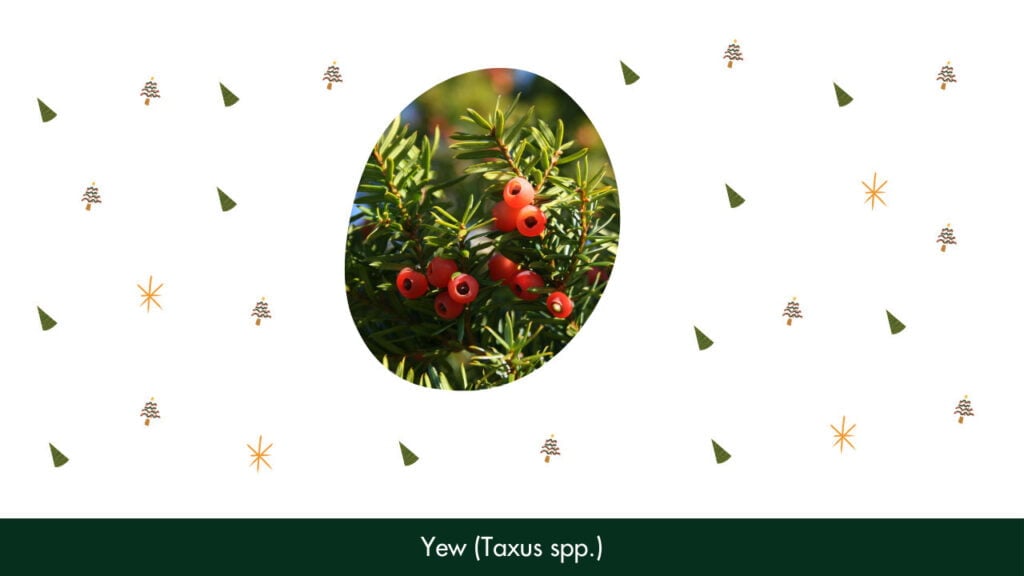
Yew is an evergreen plant with dark green needles, making it one of the best Christmas plants. This shrub can be planted indoors as a Christmas tree or outdoors in winter gardens. Yew thrives in the United States in zones 5 to 9, preferring well-drained soil with consistent moisture, partial shade, and indirect sunlight. It can also tolerate direct sunlight but requires more water. It further produces bright red berries and fragrant blooms in the winter season.
As the story goes, yew was apparently once the favorite plant of baby Jesus, and today it remains a popular choice for holiday plants and flowers. Yew is easy to care for and will add a touch of holiday spirit to any space.
7. Mistletoe (Phoradendron leucarpum)
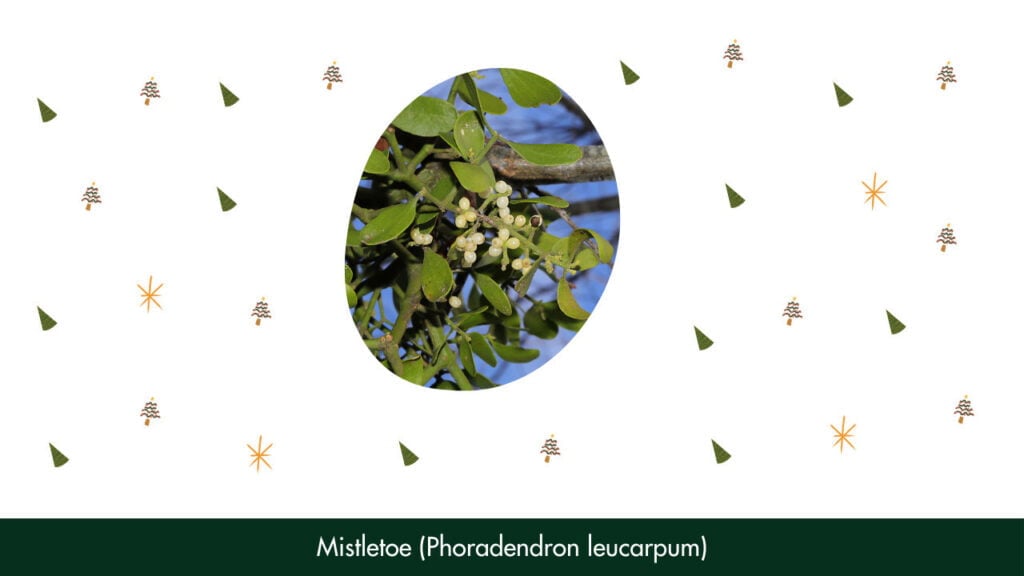
One plant that should make it to your home for holiday decorations is mistletoe. This evergreen shrub is famous for its fragrant blooms, dark green needles, and bright red berries. It grows best in USDA Hardiness Zones 6-10, in partial shade or direct sunlight.
Mistletoe thrives in well-drained soil that is kept evenly moist. This parasitic plant can be planted outdoors or indoors as a houseplant, provided it receives as much light as possible.
According to tradition, kissing under the mistletoe dates back to ancient times when the plant was believed to have magical powers. It's now a popular Christmas decoration and symbol of love and friendship during the holiday season.
8. Hellebore (Helleborus niger)
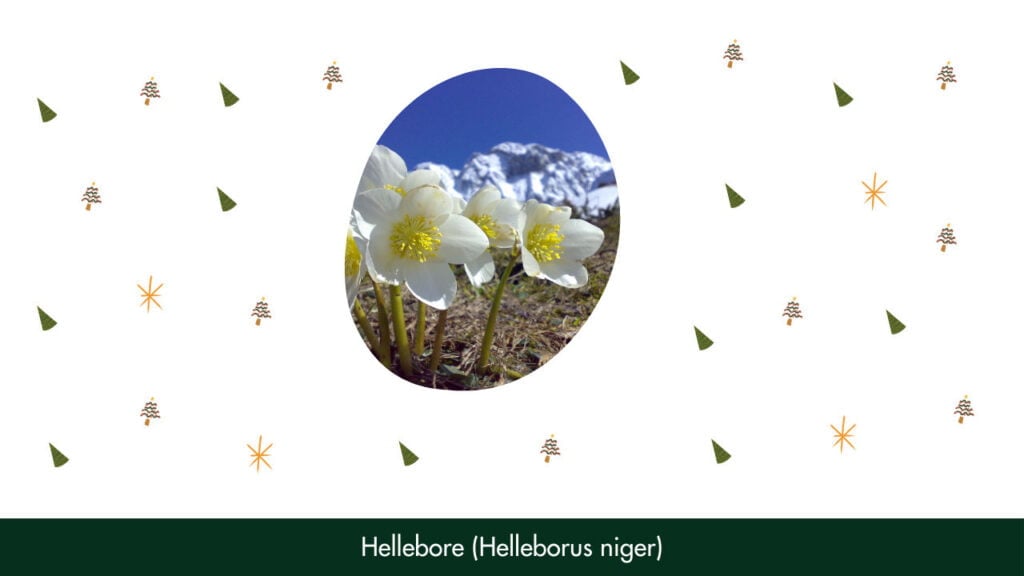
Also known as the Christmas rose, the evergreen shrub hellebore features dark green leaves and fragrant blooms. It is one of the best Christmas plants to brighten up your winter garden or indoor space. The hellebore needs partial shade and well-drained soil that is consistently moist but not soggy. It grows best in USDA Hardiness Zones 4-9 and should be protected from direct sunlight and extreme temperatures.
As a myth regarding this plant follows, the Christmas rose sprouted from the snow as a gift to baby Jesus. This makes it the perfect addition to your holiday decorations and a great gift for loved ones.
9. Gardenia (Gardenia jasminoides)
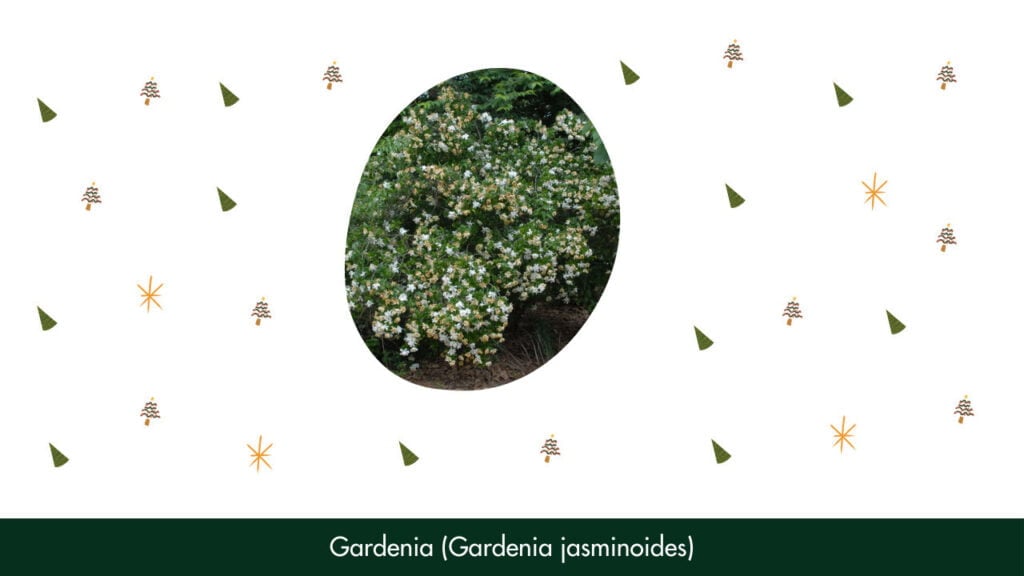
Gardenia is an evergreen shrub with glossy green leaves, fragrant winter blooms, and bright red berries, making it a popular choice for the festive season. Gardenias require well-drained soil that's consistently moist, partial shade, and as much indirect light as possible. They're hardy in USDA Hardiness Zones 8-11 and should be planted outdoors in the late fall or early spring.
If you're growing them indoors, ensure they're placed next to a bright window or under medium light. Avoid direct sunlight, as it may cause leaf drop or scorching.
10. Wintergreen (Gaultheria procumbens)

Wintergreen is an evergreen shrub that is a perfect addition to your holiday decorations. This festive plant is native to the United States and can thrive in USDA Hardiness Zones 3 through 8.
To keep this plant healthy and thriving, it needs well-drained, evenly moist soil and indirect sunlight. Wintergreen boasts dark green needles and fragrant, nectar-rich flowers that produce bright red berries, making it a favorite for the winter garden.
According to folktales, wintergreen was used as a host tree for the parasitic plant, Mistletoe. It's also said that wintergreen was one of the plants Baby Jesus played within the manger, and today it symbolizes purity and sweetness.
11. Moth Orchid (Phalaenopsis spp.)

The moth orchid is a tropical plant that is bound to add a touch of elegance to any holiday décor. It requires bright but indirect light, well-drained, consistently moist soil, and a temperature range of 60-80°F to thrive. This plant is suitable for USDA Hardiness Zones 10-12 and can be grown indoors and outdoors.
The moth orchid is known for its tall green stems, glossy green leaves, and aromatic blossoms in shades of pink, white, and purple. Based on our observations, these plants can bloom for months during winter, making them one of the best Christmas plants and flowers.
Interestingly, the pyramidal shape of the orchid is believed to resemble the manger that held the baby Jesus. Unlike other holiday plants, the moth orchid is a perennial plant that can be enjoyed for years.
12. Cyclamen (Cyclamen persicum)
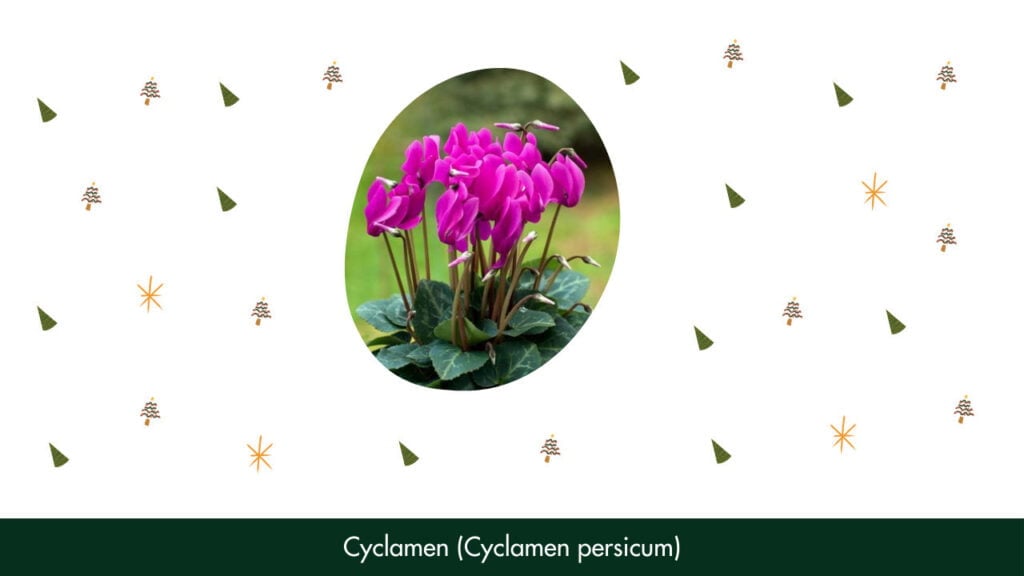
With its cheerful flowers and shiny green leaves, cyclamen is one of the best Christmas plants to bring the holiday season to life. Cyclamen blooms will reward you with a delightful aroma throughout the winter season. It needs bright, indirect light, well-drained soil that is slightly moist and grows best in USDA Hardiness Zones 9 to 11.
Cyclamen's association with rebirth and regeneration fits well into the Christmas tradition. In Greek mythology, cyclamen is believed to have grown from Cybele's spilled blood after she learned of her lover Attis' death. It's believed to be the first plant to bloom in the Holy Land after Jesus' birth, and its flowers represent the Star of Bethlehem's light.
13. Dwarf Alberta Spruce (Picea glauca)

Dwarf Alberta spruce is the perfect Christmas plant that will bring the festive season to your home. This evergreen shrub is pyramidal and features dark green needles that stay healthy all year round. It thrives in well-drained soil that is slightly moist and needs bright light with some partial shade. It's best planted in USDA Hardiness Zones 2 to 6. Unlike some other holiday plants, dwarf Alberta spruce is not toxic to animals.
Dwarf Alberta spruce is also a host tree for the parasitic plant, Mistletoe. Based on the mythos, this spruce was the baby Jesus' favorite Christmas plant, making it a popular choice for Christmas decorations. In addition to its beauty, the dwarf Alberta spruce is an excellent topiary plant that can be shaped into any form you like.
14. Norfolk Island Pine (Araucaria heterophylla)

The Norfolk Island pine, native to Norfolk Island, is a popular Christmas plant that resembles a fir tree. It grows best in bright, indirect sunlight. It thrives in consistently moist soil, so water sparingly, but ensure it is evenly moist.
This tropical plant is sensitive to the winter season's dry air, so maintain humidity and keep it away from cold drafts. It requires a slightly acidic planting medium, so you can add compost or fertilizer to promote healthy growth. It is hardy in USDA Hardiness Zones 10-11 and can grow outdoors in a warm climate, but it is also an excellent houseplant.
15. Winter Honeysuckle (Lonicera fragrantissima)
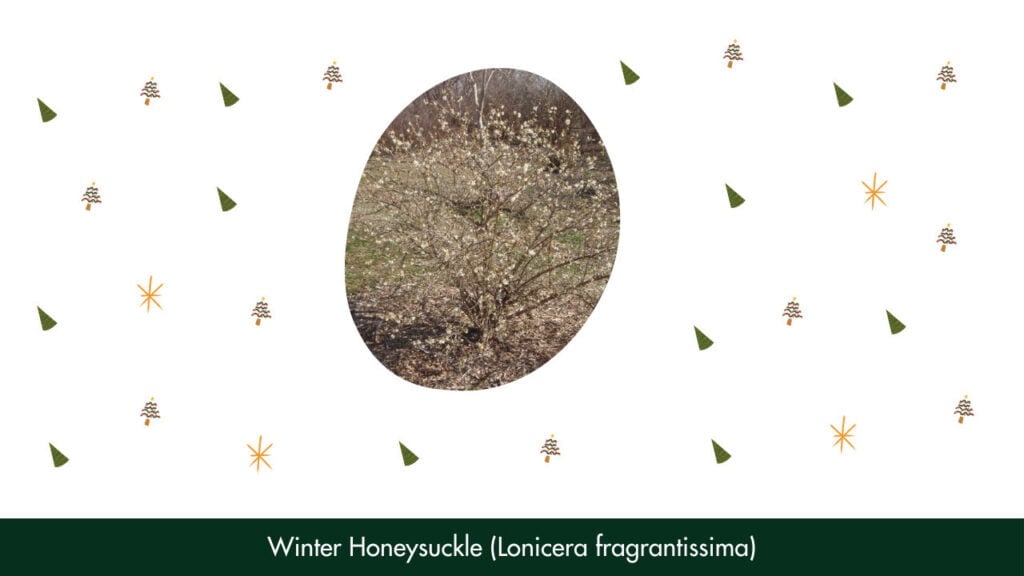
This eye-catching evergreen shrub thrives in USDA Hardiness Zones 4-9, with partial shade and well-drained, partly moist soil to avoid leaf drop or root rot. The winter honeysuckle produces sweet-smelling efflorescence, followed by bright red berries in the late fall and early spring. Plus, it's non-toxic to animals.
Interestingly, the winter honeysuckle bloomed on the night baby Jesus was born, making it a festive addition to your holiday season. This plant can be grown indoors and outdoors, making it a versatile choice for your winter garden. It is also a host tree for the beautiful and rare gold honeysuckle (Lonicera flava). So, don't miss out on this unique and lovely plant this Christmas!
16. Rosemary (Salvia rosmarinus)
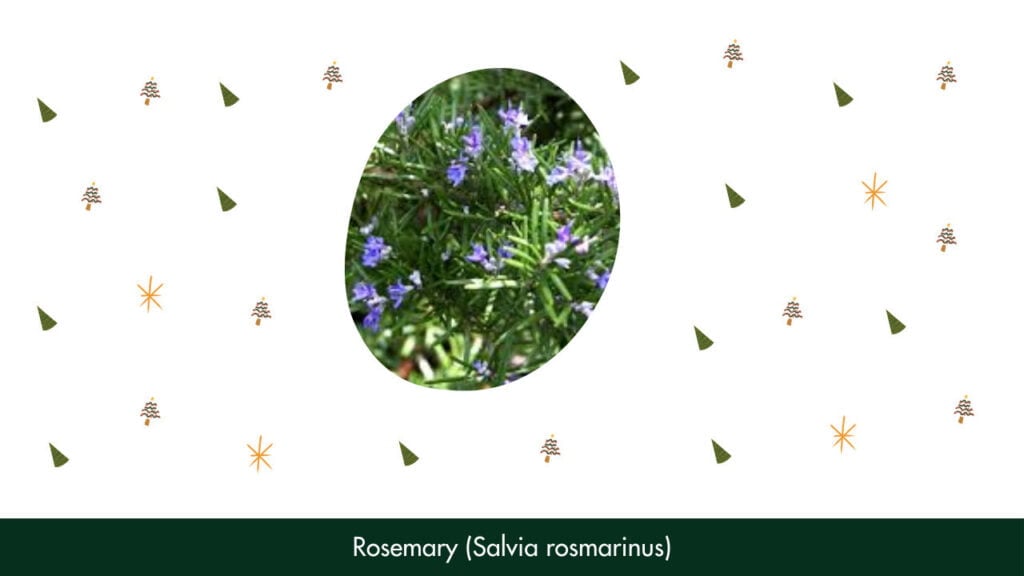
A uniquely versatile plant, the rosemary thrives in USDA Hardiness Zones 8-10 and prefers well-drained, alkaline soil with consistent moisture. It loves as much bright light as possible.
As an evergreen shrub, it will maintain its healthy green leaves and fragrant blooms all year. Plus, rosemary is not toxic to animals, making it a safe choice for households with pets. It is also used as a spice in various food items.
In ancient times, rosemary was believed to ward off evil spirits and protect against the plague. No wonder it has become a favorite Christmas plant.
17. Yuletide Camellia (Camellia Sasanqua 'Yuletide')
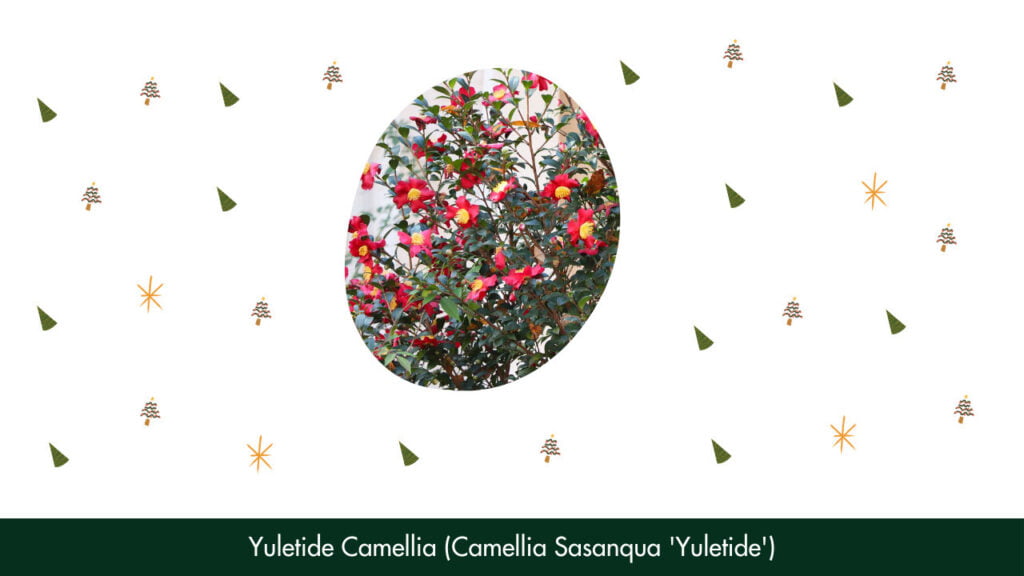
The stunning evergreen shrub yuletide camellia is the perfect Christmas plant to make your holiday season a blast. It does best in USDA Hardiness Zones 7-9 and can be grown as a potted plant or planted outdoors in winter gardens. It needs a host tree or partial shade to thrive and should be planted in slightly moist and well-draining soil.
In Japan, the camellia flower represents the divine, and in China, it symbolizes long-lasting devotion and love. And according to ancient Druid mythology, the camellia plant is associated with the winter solstice and the sun's rebirth. Give the yuletide camellia a try this holiday season and see why it's one of the most beloved and popular Christmas plants out there.
18. Balsam Fir (Abies balsamea)
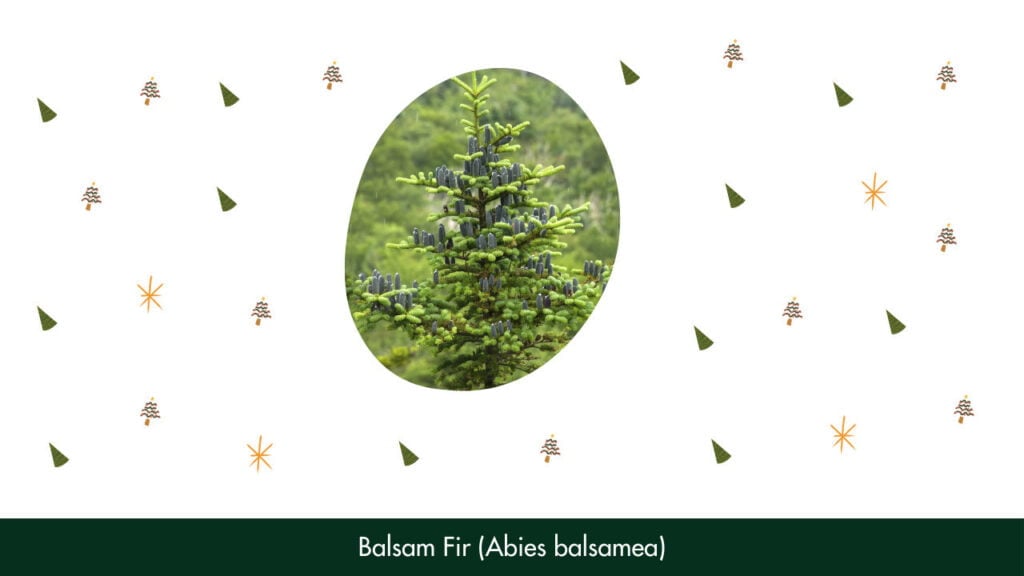
The Balsam fir is a popular Christmas tree that can be grown as a decorative houseplant. It prefers cool temperatures, and while it can handle direct sun, it does better with indirect light. Drawing from experience, it requires well-drained soil with a slightly acidic pH and grows best in USDA Hardiness Zones 3-6.
Did you know that the Balsam Fir isn't just a beautiful plant? Native Americans used it to treat various ailments, and the needles and bark have a refreshing odor often used in aromatherapy.
19. Juniper (Juniperus occidentalis)
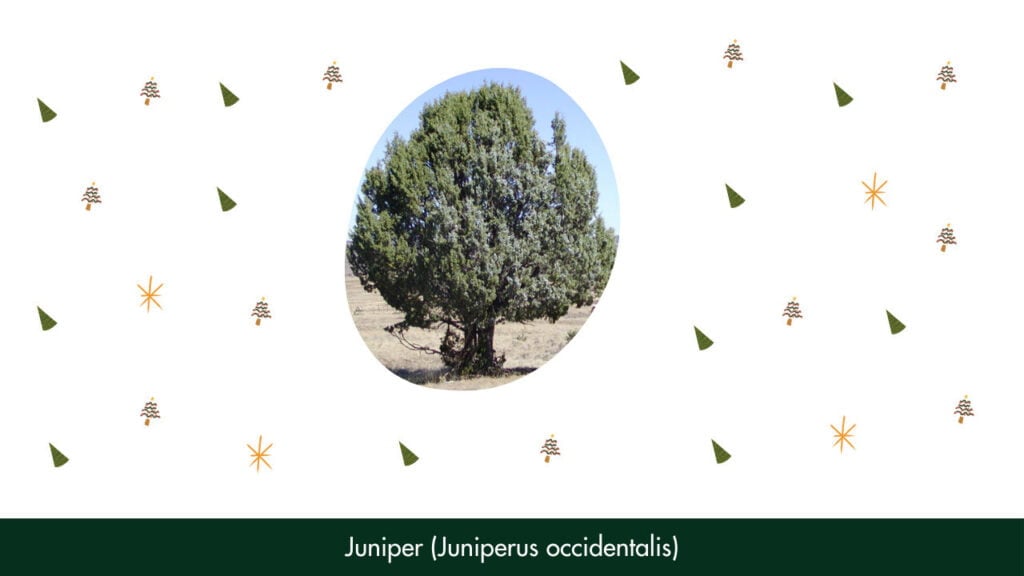
The juniper is a stunning plant commonly used for topiary and wreaths. It generally thrives in areas with alkaline soil and is best suited for USDA Hardiness Zones 4-8. It prefers direct sunlight and requires well-draining soil, and it can be grown indoors by placing it in a bright window with indirect light. Juniper is not toxic to animals, therefore this plant is safe to purchase for pet parents.
Furthermore, juniper is a parasitic plant that relies on a host tree for survival. The female flowers of the juniper eventually turn into berry-like cones.
To keep your juniper healthy and vibrant, water sparingly and prune regularly. The juniper is a perfect addition to your holiday decorations with its healthy green leaves and bright flowers.
20. Paperwhites (Narcissus papyraceus)
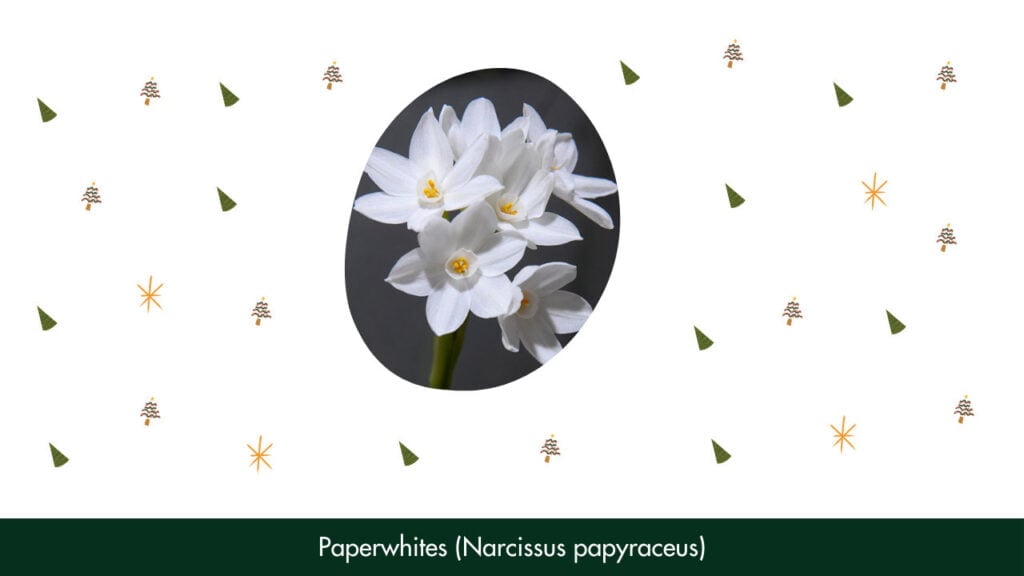
Paperwhites are a type of Narcissus that are incredibly easy to care for. They can grow in USDA Hardiness Zones 8-11 but are also great for indoor use. With their delicate white blooms and sweet fragrance, the paperwhites need a well-draining planting medium and as much direct sunlight as possible to thrive.
As stated in Greek mythology, the plant is named after Narcissus, a beautiful but vain youth who fell in love with his own reflection and was turned into a flower by the gods as punishment. With its beautiful blooms and intriguing history, the Paperwhite is the perfect addition to your holiday décor.
21. Pear Tree (Pyrus communis)
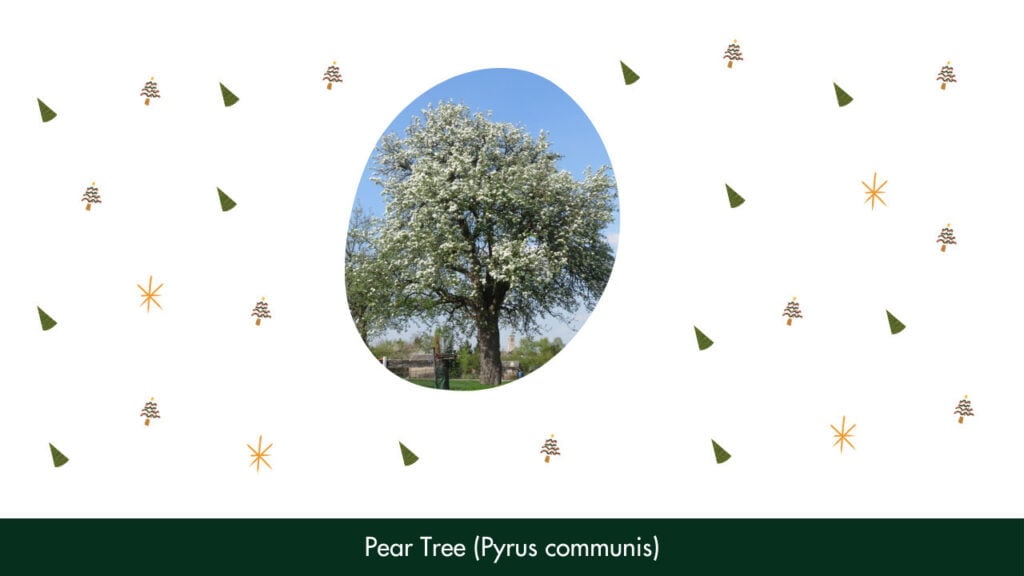
The pear tree is an underappreciated plant that will make your home stand out this holiday season! What sets this plant apart is its stunning blue-green leaves, which make a perfect backdrop for its white blossoms and succulent fruit.
Fun fact: a pear is actually a modified berry! It needs full sun exposure, and well-drained soil and should be grown in USDA Hardiness Zones 4-9.
According to Christmas symbolism, the tree was the location of the "Partridge in a Pear Tree" mentioned in the popular Christmas carol. Additionally, the pear fruit is often associated with the Virgin Mary and the baby Jesus as a symbol of love, grace, and mercy. So, start properly caring for the pear tree and use the fruit to make a festive wreath!
22. Blue Spruce (Picea pungens)
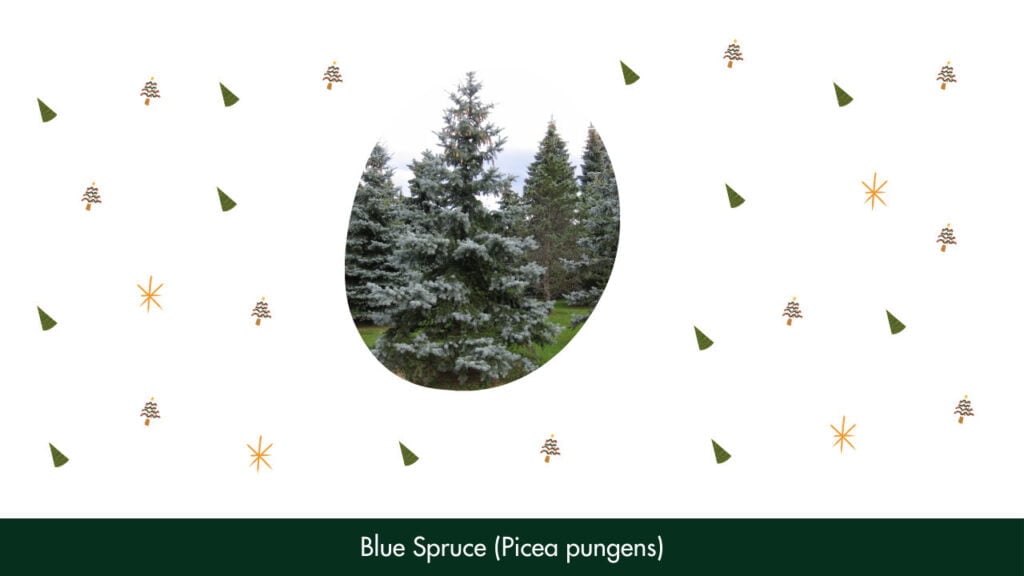
The blue spruce exhibits stunning blue-green color and a graceful, pyramidal shape. This evergreen conifer is ideal for those who want to bring a touch of the great outdoors into their home during Christmas and the holidays.
The blue spruce is native to the western United States and requires plenty of sun exposure and well-drained soil moisture to thrive. Even though non-toxic for animals, it can attract pests such as aphids and spider mites. It can be grown outdoors in USDA Hardiness Zones 2-7.
Conforming with Native American mythology, this plant symbolized parasitism, while in ancient Rome, it was associated with victory and honor. With its stunning variegation and petal-like bracts, blue spruce will surely be a hit with your family and friends!
23. Amaryllis
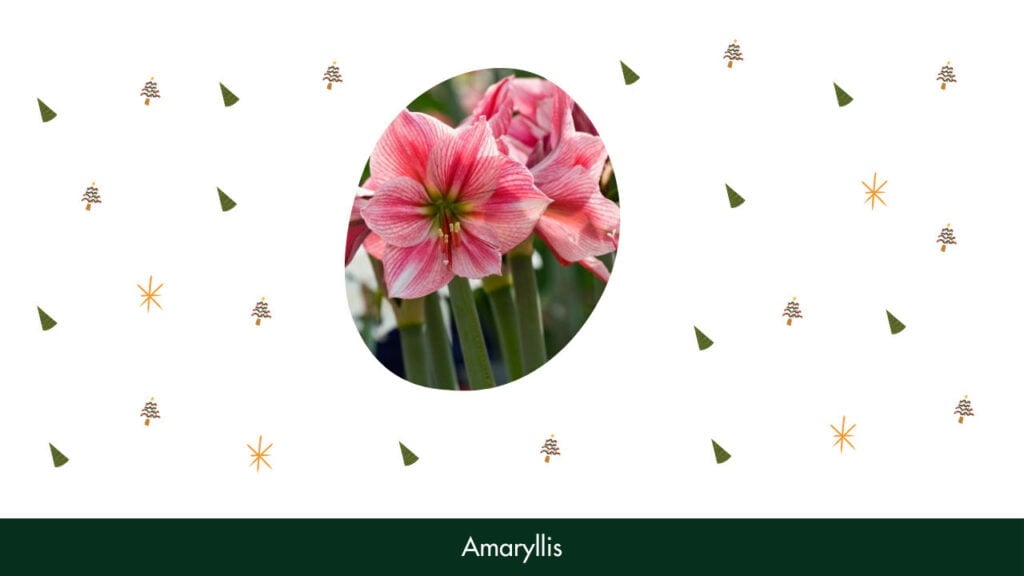
Amaryllis is a stunning succulent plant with nectar-rich flowers that will bring your holiday décor to life. Unlike poinsettia plants, amaryllis can bloom for up to six weeks, needing bright, indirect light and well-drained soil to thrive. They can be planted outdoors in USDA Hardiness Zones 8-11 but are commonly grown as indoor plants.
Amaryllis can grow well in both acidic and alkali soils, just like citrus trees. If you want to create a stunning display, pair amaryllis with moss and Galanthus as a ground cover.
24. Frosty Fern (Selaginella kraussiana)
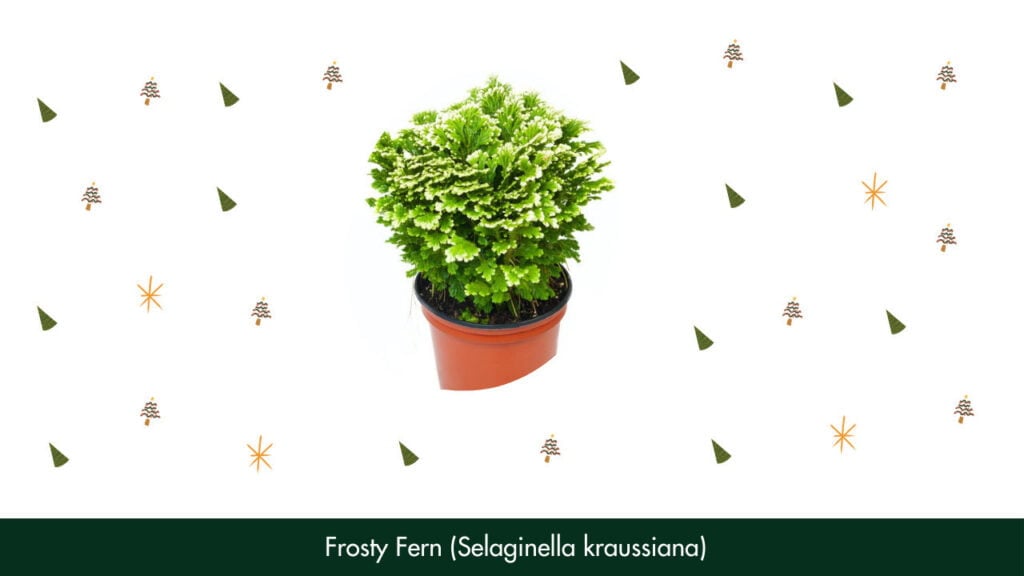
This delicate plant is sure to be a unique addition to your home. The frosty fern is native to South Africa but can thrive in the United States in well-drained soil, and it prefers partial shade to full sun exposure. It's hardy in USDA Hardiness Zones 9-11, and it's perfect for growing in indoor and outdoor containers.
In line with a historical chronicle, the frosty fern was used by Santa Claus himself to decorate his kitchen during the Christmas season. While it may not be as well-known as other Christmas flowers and plants, the frosty fern's delicate beauty and orange-tinted buds make it a special addition to any holiday décor.
25. Holly (Ilex aquifolium)
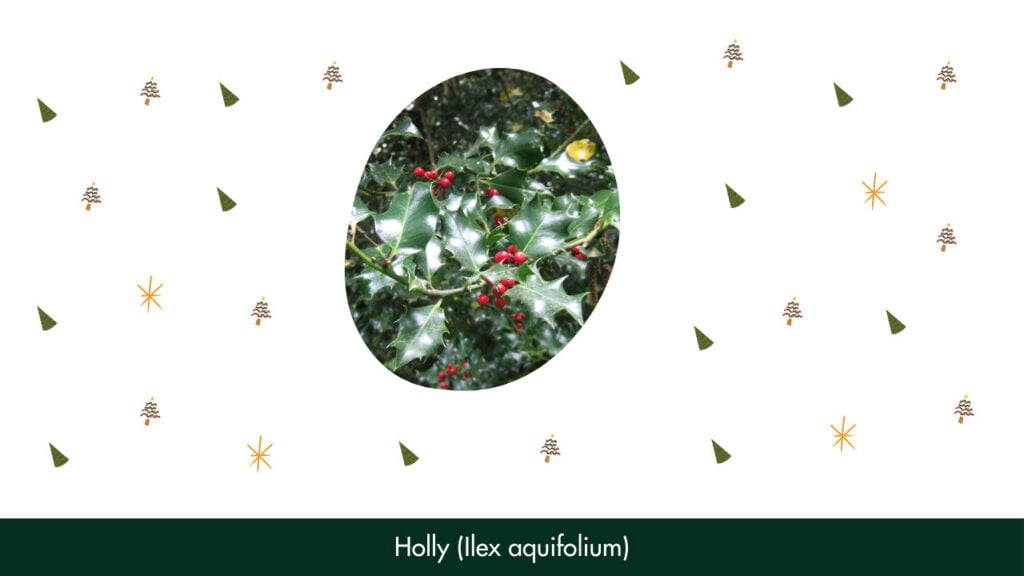
Holly is a versatile evergreen shrub that can be grown outdoors and can also be potted and used indoors during the holidays. It requires well-drained soil, full sun to partial shade, and grows best in USDA hardiness zones 6-9. While Holly is a beautiful addition to any home, it's essential to note that the plant is toxic to animals.
Holly plants can be either male or female, separately. Only female plants produce berries, which are modified cones containing four seeds.
It is important to note that holly (Ilex aquifolium) differs from holly (Ilex opaca) in several ways, one of them being the cold tolerance factor. Ilex opaca is more cold-hardy than Ilex aquifolium, and is able to tolerate temperatures as low as -30°F (-34°C).
Tip
Vary the textures and heights of the plants to create visual interest that would add an interesting appeal to your home during the holidays. For example, you can mix a tall Christmas tree with a shorter plant like poinsettia. You can also mix and match different textures of plants with shiny leaves, like a Christmas Cactus, and plants with more foliage, like a pine or a fir tree.
Conclusion
Deck the halls with boughs of Holly, but don't forget about other Christmas blooms like bulbs and buds! If you want to plant outdoors, select well-drained soil and check your hardiness zone.
Also, watch out for pesky pests during the growing season. Your decorative plants will thrive regardless of the weather with just an inch of care and attention!
